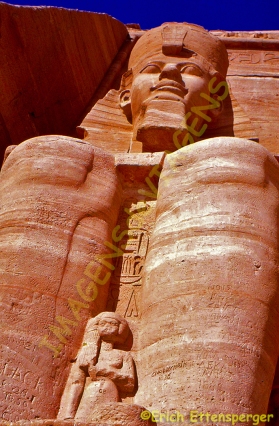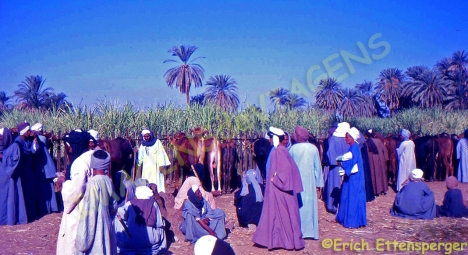O Nilo, o deserto e pedras colossais
O Egito é um país localizado nas margens do Rio Nilo no nordeste da África, entre o Mar Vermelho, o deserto da Líbia, o Sudão e o Mar Mediterrâneo.

A arquitetura foi a mais desenvolvida de todas artes, o que pode ser confirmado pelas obras monumentais como as pirâmides, palácios e templos, testemunhas de um passado grandioso.
Foi nesse país onde eu morei durante seis meses da minha vida, sendo uns meses em Cairo, outros em Luxor e Sharm el Sheikh.

Pude visitar as Pirâmides de Gizé várias vezes, inclusive, a Pirâmide de Queóps que faz parte da lista das Sete Maravilhas do Mundo Antigo.

Essas pirâmides integram o conjunto chamado “Mênfis e sua Necrópole: as Pirâmides de Gizé a Dashur” que integram o Patrimônio Mundial da UNESCO desde 1979.
Além da vibrante Cairo, com cerca de 8 milhões de habitantes, me impressionei com a Península do Sinai, onde escalei o Monte Moisés (2.285 m), próximo ao Monastério de Santa Catarina, área integrante do Patrimônio Mundial desde 2002. Foi em Sharm el Sheikh onde mergulhei nas fantásticas e coloridas águas do Mar Vermelho.

No tempo em que passei no Alto Egito, em Luxor, tive a oportunidade de visitar os templos incríveis de Karnak e Luxor, do outro lado do Nilo, no Vale dos Reis, onde foram descobertos 64 túmulos da época do Antigo Egito. Eles integram o conjunto “Tebas Antiga com suas Necrópoles” a Lista do Patrimônio Mundial da UNESCO desde 1979.

O tamanho das estátuas colossais de pedra nos templos em Abu Simbel me fascinaram pelas dimensões. Elas fazem parte da lista do Patrimônio Mundial da Unesco como integrantes dos “Monumentos Núbios de Abu Simbel até Philae”, também desde 1979. Aliás, esses templos somente foram preservados porque foi feito um grande remanejamento de 22 monumentos e complexos arquitetônicos para as margens do lago Nasser, situado na altura de 64 metros do lugar onde ocorreu a inundação da área com a construção da Represa de Assuã.

É também impressionante as viagens pelo Nilo a bordo dos barcos típicos chamados Felukas.



Durante este tempo no Egito, visitei vários mercados coloridos cheios de pessoas, animais, sons e cheiros, onde pude absorver toda aquela atmosfera.

Também cavalguei camelos. A sensação que se tem quando se passeia de camelo é de que você está a bordo de um navio navegando pelas areias do deserto.

E antes de finalizar, uma dica: não planeje sua viagem para os meses de julho e agosto, no Alto Egito é extremamente quente… !!
Observação: se você quiser continuar “viajando” com o nosso blog, clique no botão “seguir” localizado no canto inferior direito dessa página. Você receberá um email com um link para confirmar a assinatura desse blog (não paga nada). Quando clicar no link, você será direcionado para uma página em inglês (essa página explica o procedimento no caso de você desejar um dia parar de seguir o blog). A partir daí, você já está “seguindo” o blog.
Der Nil, die Wüste und steinerne Kolosse
Ägypten, das Land an den Ufern des Nil im Nordosten von Afrika gelegen zwischen dem Roten Meer, der Wüste von Libyen, Sudan und dem Mittelmeer.

Seine Architektur zeugt von monumentalen Werken wie den 4.500 Jahren alten Pyramiden, Palästen und Tempeln, Zeugen längst vergangener grandioser Epochen.

Es war dieses Land, wo ich insgesamt sechs Monate meines Lebens verbringen konnte. So konnte ich natürlich auch mehrere Male die Pyramiden von Gizeh besuchen und bewundern.

Sie gehören zu den sieben antiken Weltwundern und sind seit 1979 Weltkulturerbe. Neben dem pulsierenden Kairo mit seinen etwa 8 Millionen Einwohnern war es mir auch vergönnt die Sinai-Halbinsel zu besuchen und dort einerseits den Berg Moses(2.285m) in der Nähe des Katharinenklosters zu besteigen und andererseits in Sharm el Sheikh das Rote Meer und seine fantastische farbenprächtige Unterwasserwelt schnorchelnderweise zu genießen.

Längere Zeit verbrachte ich auch in Oberägypten, v.a. in Luxor mit seinen unglaublichen Tempelanlagen wie dem Karnak-Tempel und Luxor-Tempel und auf der anderen Seite des Nils das Tal der Könige, eine Nekropole im Alten Ägypten mit bislang 64 entdeckten Gräbern.

Beeindruckend sind auch Ausflüge auf dem Nil mit den typischen Felukas, den traditionellen Segelbooten.



In Abu Simbel beeindrucken die Größe der steinernen Kolosse dieser Felsentempel, die seit 1979 in der Weltkulturerbeliste der UNESCO sind. Beide Tempelanlagen mussten wegen des Assuan Staudammes und dem Aufstauen des Nassersees an einen höheren Standort verlegt werden.

Auch ließ ich es mir nicht nehmen, verschiedene farbenprächtige Märkte mit all seinen Menschen, Tieren, Geräuschen und Gerüchen zu besuchen und diese Atmosphäre in mich aufzusaugen.

Falls Sie schon einmal auf einem Kamel geritten sind, dann verstehen sie auch, warum man diese Fortbewegungsweise mit denen von Wüstenschiffen vergleicht.

Und ein Tipp noch: in Oberägypten wird es in den Monaten Juli und August extrem heiß…!!
Hinweis: Falls Sie unseren “Reisen” auf dem Blog folgen wollen, dann klicken Sie einfach nur auf “FOLGEN” in der unteren rechten Ecke dieser Seite. Sie werden dann automatisch über jede unserer weiteren Blog-Reisen informiert.
The Nile, the desert and stone colossi
Egypt, the country located on the banks of the Nile in the north-east of Africa between the Red Sea, the Libyan Desert, Sudan and the Mediterranean.

Its architecture bears witness to monumental works such as the 4,500-year-old pyramids, palaces and temples, witnesses of past grandiose eras.

It was this country where I could spend a total of six months of my life. So I could also visit the Pyramids of Giza several times.

They belong to the seven ancient wonders of the world and have been world cultural heritage since 1979. In addition to the pulsating Cairo with its about 8 million inhabitants, I was also allowed to visit the Sinai peninsula and on the one handside I could climb the Mount Moses (2.285m) near the Catherine’s monastery and on the other handside I could enjoy in Sharm el Sheikh the Red Sea and its fantastic colorful underwater world by snorkeling.

A long time I also spent in Upper Egypt, mainly in Luxor with its incredible temples such as the Karnak Temple and Luxor Temple and on the other side of the Nile the Valley of the Kings, a necropolis in Ancient Egypt with 64 graves discovered so far.

Also impressive are trips on the Nile with the typical Felukas, the traditional sailing boats.



In Abu Simbel impress the size of the stone colossi of these rock temples, which are since 1979 on the UNESCO World Heritage List. Both temples had to be moved to a higher location because of the Aswan dam and the accumulation of the waters oft he Nasser lake.

I did not allow myself to miss the visits of various colorful markets with all its people, animals, sounds and smells, and to absorb this atmosphere.

If you have ever ridden on a camel, you will also understand why you are comparing this mode of proceeding with those of desert ships.

And a tip still: in Upper Egypt it becomes extremely hot in the months of July and August…!!
Note: If you want to follow our “Journeys” on the Blog, just click on “FOLLOW” in the lower right corner of this page. You will then automatically be informed about each of our new Blog-Travels.




Incrível!! Eu sou apaixonado pela cultura egípcia desde os primeiros anos que comecei a estudar sobre ela na escola. É fascinante como uma civilização tão antiga conseguiu construir grandes monumentos e ter avançado tanto em vários campos da ciência. Tenho muita vontade de ir ao Egito para ter essa experiência histórica, acredito que ficarei encantado. Parabéns pelo post.
CurtirCurtir
Olá João Paulo, a civilização egípcia é realmente fascinante! Como foi possível naquele tempo se realizar construções monumentais com as condições da época? O estudo do Egito Antigo nos faz ficar impressionados! Nós agradecemos sua visita e seu comentário enriquecedor!
CurtirCurtir